A lot of people think of varicose veins when they think of vein problems, however, varicose veins are only one of many possible symptoms of potentially serious vein issues. Even if you suffer from just one of the symptoms listed below, you could be dealing with a very common (and treatable) medical condition.
Vein problems are progressive, so if the underlying vein problem is not treated properly by a doctor certified in vein care, symptoms will continue to get worse. If you are experiencing any of these symptoms, please don’t hesitate to get in touch with us.
Do you suffer from these symptoms?
Select a symptom to learn more
Leg & Ankle Swelling
One of the most common causes of leg and ankle swelling is a condition called Venous Reflux. If the valves in the veins get weak enough, blood begins to collect and pool in the lower legs, pressure builds and water that normally would be absorbed remains in the legs.
This pressure also causes water to be pushed out of the vessels into the legs, increasing swelling. In general, when you elevate your legs or when you sleep the swelling goes down. This can cause your legs to look more normal in the morning, but once you get up the swelling will most likely return.
If you press on your lower leg or ankle for a few seconds and leave indention where your finger once was, that is a very good indication that you may be suffering from venous reflux, a treatable vein problem.
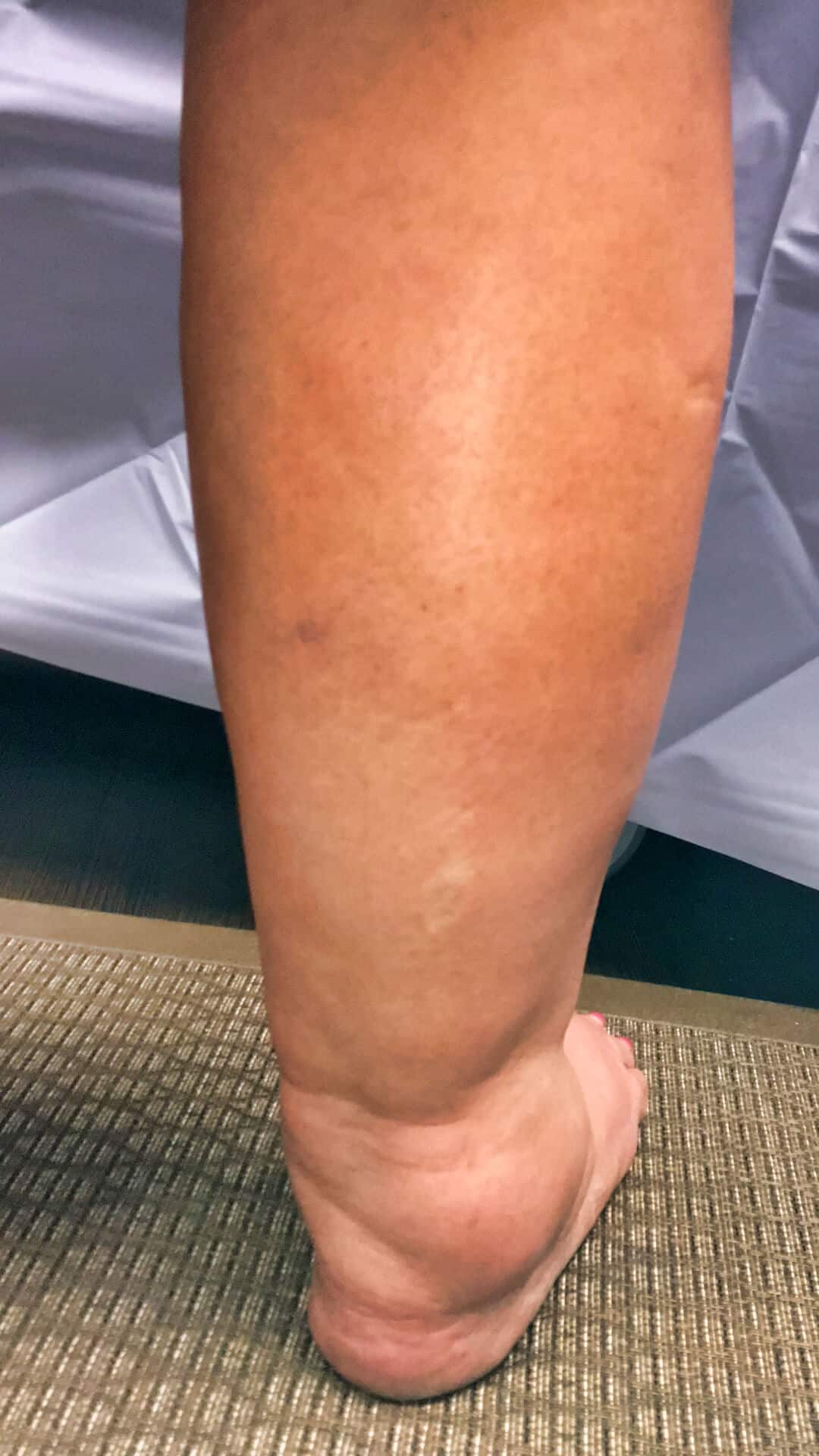
Before

After (4.5 Months After Treatment)
*individual results may vary
Leg Pain & Cramping
Venous Reflux is a common cause of leg pain and cramping. When the valves in the veins get weak or damaged, blood begins to pool in the legs causing increased pressure. Not only does this pressure by itself cause pain, but it can also limit the delivery of oxygen and nutrition to our muscles.
This restricted supply of oxygen and nutrition can lead to pain, aching, and “Charlie horses” in the legs, especially when you try to relax or go to sleep. In many cases, there are no outward signs there is a problem. However, if you suffer from chronic leg cramping, Venous Reflux could be the cause of your pain.
Skin Darkening & Discoloration
Venous Reflux can cause the skin of the foot, ankle, and leg to start to darken and turn red/pink, brown or rust-colored. In advanced cases, the skin can even begin to look very dark brown or black. This staining of the skin occurs when the valves in the veins become weak, blood pools in the veins and pressure increases.
Red blood cells get pushed out of the veins into the skin where the body chews them up and releases a product called hemosiderin that basically stains the skin from the inside out. If Venous Reflux is left untreated the darkening spreads and gets worse and can lead to serious medical issues, like skin breaking down and open skin wounds.
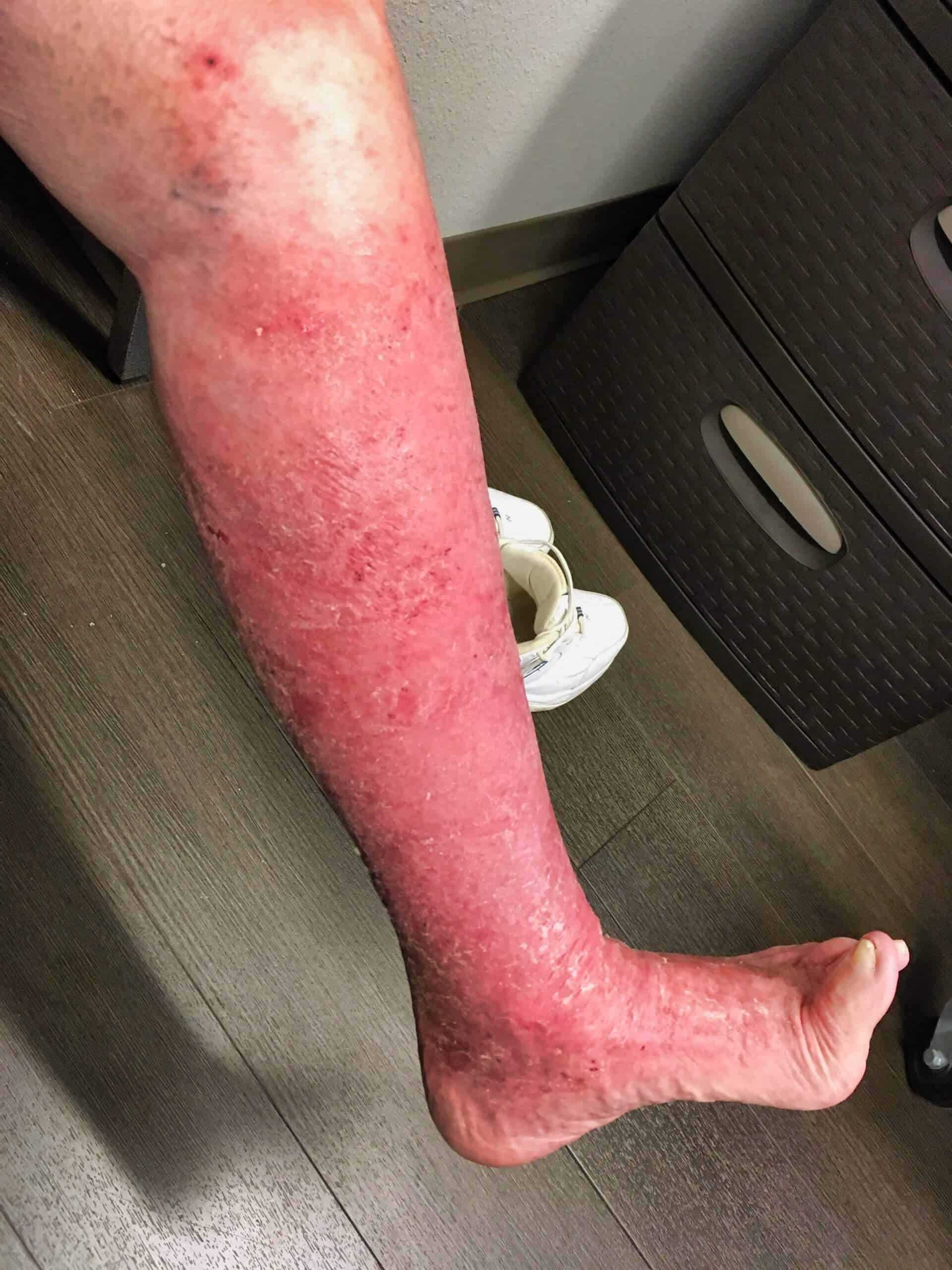
Before

After (6 Months After Treatment)
*Individual results may vary
Varicose Veins
If the valves in veins become weakened or damaged, blood pools inside the vein and pressure increases. This increased pressure causes the veins to enlarge and makes them more noticeable on the skin surface. Large, bulging, twisting veins are commonly called varicose veins. These visible veins can be a sign of vein disease below the skin.
Lots of people believe that varicose veins are a purely cosmetic issue. They aren’t, and most major health insurance providers will pay for varicose vein treatment!
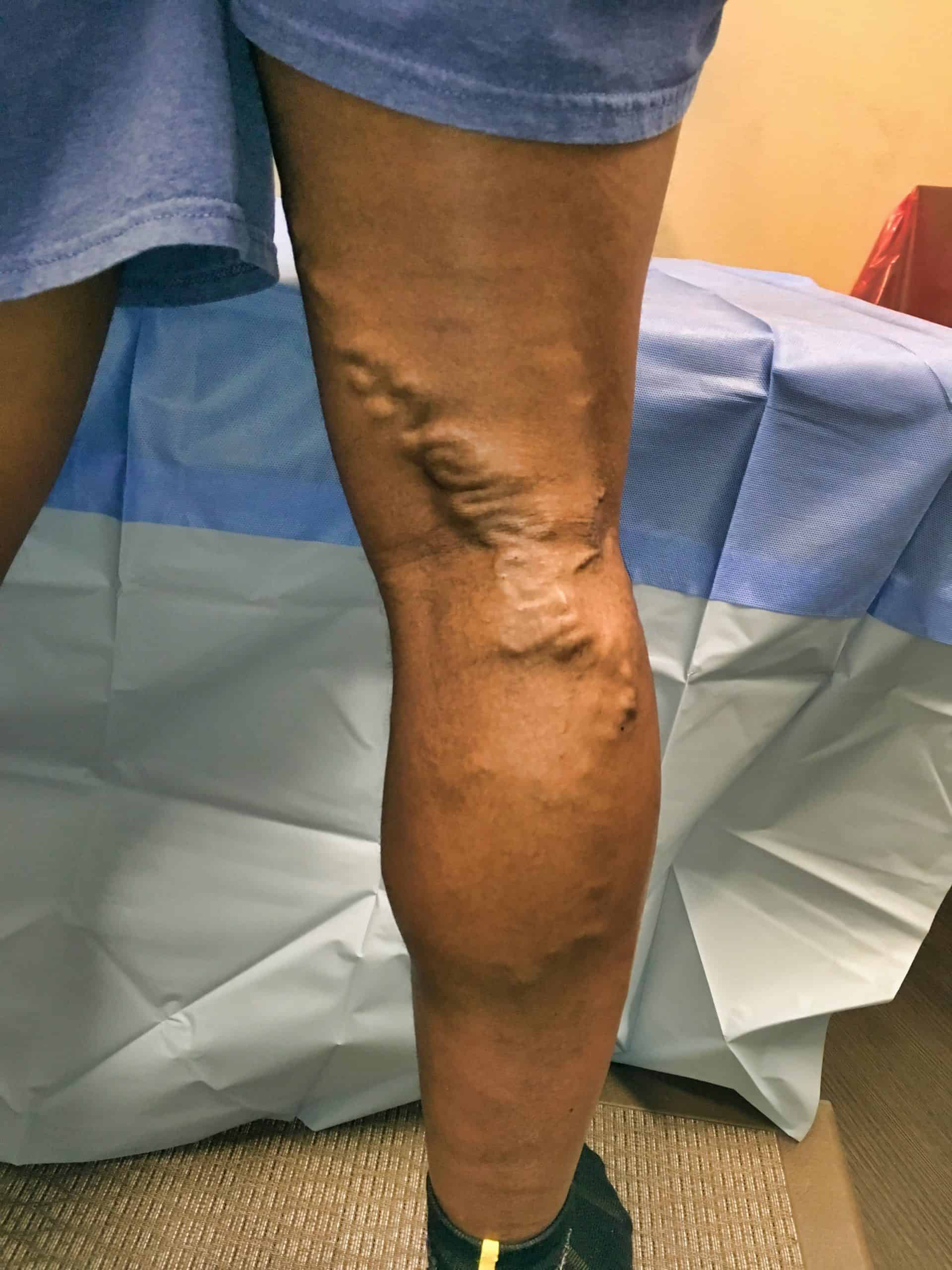
Before

After (5 Weeks After Treatment)
*Individual results may vary
Open Skin Ulcers & Wounds That Won’t Heal
If left untreated, Venous Reflux can become chronic venous insufficiency (CVI) and lead to skin issues on the legs such as open sores and ulcers, or wounds that won’t heal. This typically happens on the calf, ankle or foot and is a serious medical problem.
Damaged veins in the legs allow blood to pool in the calf, ankle and foot instead of flowing back efficiently, which causes pressure to build in the vessels and tissue of the leg. This prevents the flow of good oxygen and nutrition into the surrounding tissue. Over time, this starves and suffocates the skin and underlying tissue causing it to begin to die.
Not only can this lead to an open skin ulcer, but it can also prevent even simple injuries to the leg from healing normally. If the underlying cause, Venous Reflux, is not addressed this chronic, progressive disease process can greatly impact your quality of life.

Before

After (5 Months After Treatment)
*individual results may vary
Leg Throbbing & Aching
Regardless of age, it is not normal for a person to have aching in the legs that limits activity or hinders their quality of life. Venous Reflux is a known cause of leg pain, aching and throbbing that gets worse over time and is easily diagnosed and treatable. If you have regular leg pain for no apparent reason, or aching and throbbing that affects your quality of life, you may suffer from vein disease in the legs.
Restless Legs
Venous Reflux can cause feelings of throbbing, pulling, creeping, or other unpleasant sensations in the legs and an uncontrollable, and sometimes overwhelming, urge to move them. This is commonly referred to as “Restless Legs” or “Restless Leg Syndrome.”
Symptoms occur primarily at night when a person is relaxing or at rest. They can get even worse after they fall asleep and have been known to get bad enough to wake people up. Moving the legs relieves the discomfort, but only temporarily. If Venous Reflux is an underlying cause of the restlessness, treating the vein disease can reduce and even sometimes completely eliminate the restless leg symptoms.
Leg Fatigue & Heaviness
Do your legs get tired more quickly with normal activity or exercise? Do you feel like someone put ankle weights on you or your legs feel like you’re wearing concrete shoes and you have to just drag them around? If so you may be suffering from common symptoms related to Venous Reflux.
Neuropathy
Neuropathy in the legs can have a wide range of symptoms. People suffering from neuropathy may describe sensations of burning, tingling, numbness, “pins and needles”, or feeling “like my leg is asleep”. Untreated venous reflux can contribute to these symptoms.
The increased pressure that develops in the legs from venous reflux denies our nerves the oxygen and nutrition they need to function, damaging them and causing them to malfunction. Treatment of the underlying vein disease may allow the nerve to heal and help restore normal function, reducing symptoms.
Skin Breaking Down & Texture Changes
Untreated venous reflux can lead to significant problems in the skin and tissue of the leg, especially around the foot, ankle and calf. For some the skin can start to get shiny, feel tight and be super sensitive to pressure or touch. For others the skin and tissue may get thicker and rough, like the skin of an alligator or elephant. Even others may notice the skin get flaky and cracked or have some combination of multiple types of skin changes or breakdown.
All of these are signs of something happening deeper in the leg and none of them are “normal aging.” If venous reflux is part of the problem and goes untreated the issues in the legs will get worse.
Why does the skin start to break down? Untreated vein disease causes pressure to build in the leg and blood to pool instead of returning back to the heart efficiently. This pressure and old blood prevents oxygen and nutrients from reaching the skin. When the skin no longer gets the nutrients it needs, the tissue begins to die. In short, your leg is slowly suffocating and dying. With the tissue deteriorating the likelihood of developing an open skin wound is high. Your quality of life will be compromised if this medical condition is not addressed.
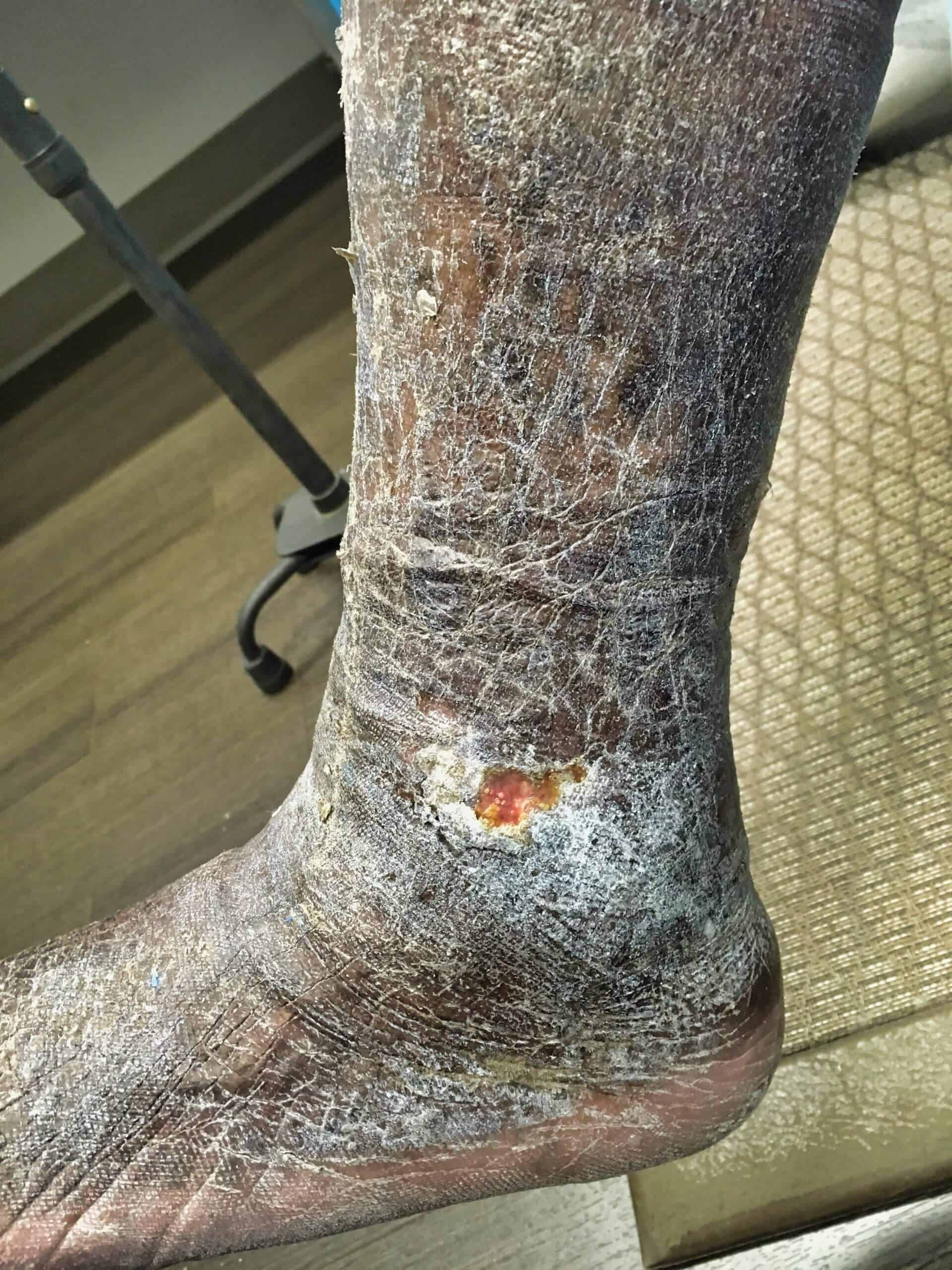
Before
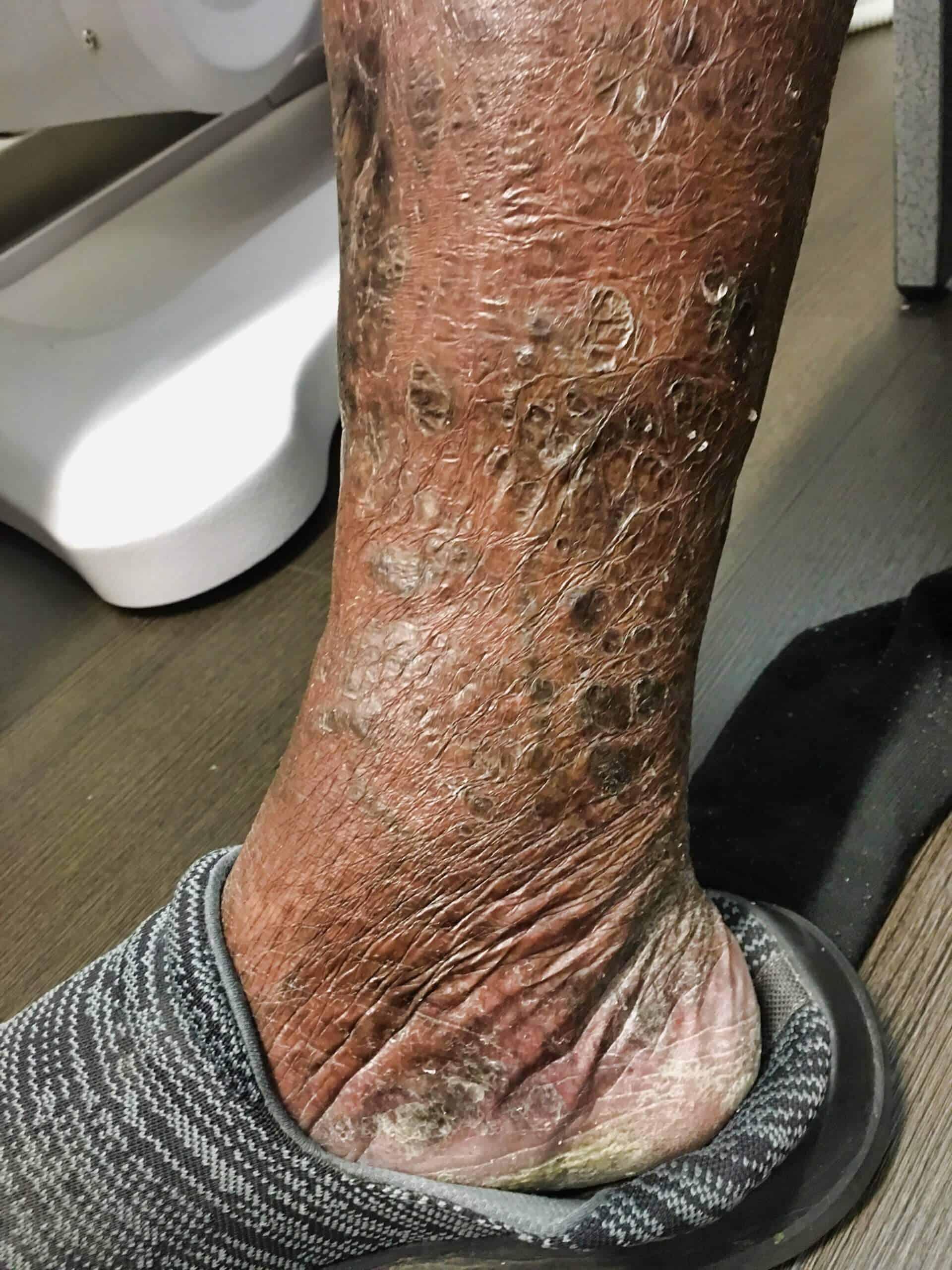
After (3 Months After Treatment)
*individual results may vary
Itching & Burning
Feelings of itching or burning in the legs can sometimes be the first sign that something is not right in the veins of your legs. Even if you do not have visible vein issues, you can still suffer from Venous Reflux Disease. The pressure that builds in the vessels and tissues of the legs because of Venous Reflux can cause a whole spectrum of symptoms including itching and burning in the legs.
Night Cramps
Do you have cramps or “Charlie Horses” that prevent you from relaxing or getting to sleep at night? Do you ever get awakened from blissful sleep by pain and cramping in your legs that just jolts you awake or awakens your loved ones? If so you may be suffering from Venous Reflux Disease, a common cause of these exact problems in the legs. The great news is Venous Reflux is treatable with little to no pain or downtime.
Spider Veins
The smaller “spider web” looking veins on the skin surface are appropriately called spider veins. Although not attractive, they typically do not cause significant medical problems. They can sometimes sting, itch or burn and will spread and darken if not treated.
Looking for a great vein clinic?
We’d love to speak with you and see how we can help you get back to living your life. Keep in mind, the first appointment is just a consultation. We won’t push any treatments on you and there’s no commitment. The first meeting is all about getting to know you and making a plan that’ll get you looking and feeling better as quickly as possible.
